Overview of Low Power Data Link Algorithms Design for Industrial Internet——Necessity, Reality and Prospect of JSCC Design
-
摘要:
原模图低密度奇偶校验(P-LDPC)码已经广泛应用于各种通信系统,为了使其能够满足不同应用场景下系统对纠错性能、硬件资源损耗以及功耗等方面的要求,需要对P-LDPC码进行进一步的设计优化。该文主要从标准信道环境下基于双P-LDPC(DP-LDPC)码的联合信源信道编码(JSCC)系统的属性研究、系统设计优化以及性能表现等角度入手,对近些年出现的针对该系统环境所做的优化分析工作进行了综述。表明进行的优化工作属实显著地改善了系统性能,为面向工业互联网(II)的LDPC码的研究工作提供些许思路。最后,该文对未来的研究工作进行了展望,为感兴趣的研究学者提供参考以继续推进。
-
关键词:
- 工业互联网 /
- 低功耗 /
- 联合信源信道编码 /
- 原模图低密度奇偶校验码
Abstract:Protograph Low Density Parity Check (P-LDPC) code is widely used in various communication systems. In order to meet the requirements of error correction performance, hardware resource loss and power consumption in different application scenarios, further design optimization of P-LDPC codes is needed. This paper focuses on the properties of Joint Source-Channel Coding (JSCC) system based on Double P-LDPC (DP-LDPC) codes in standard channel environment, the optimization of code design and performance behavior, etc. The design and optimization for the system environment in recent years is summarized. It shows that the design optimization work has significantly improved the system performance, which provides some ideas for the research of Industrial Internet (II)-oriented LDPC code. Finally, the future research work is discussed for the reference and promotion of interested scholars.
-
表 1 不同信源统计特性以及不同信道编码矩阵在基于DP-LDPC码的JSCC系统下对应的译码门限值
${p_{(1)}} = 0.010$ ${p_{(1)}} = 0.015$ ${p_{(1)} } = 0.020$ BAR4JA –2.524 –1.450 –0.632 BIARA–1 –3.145 –1.984 –1.155 BAR3A –3.248 –1.910 –0.965 BIARA–2 –3.438 –2.254 –1.379 表 2 针对
${{{B}}_{\rm{L1}}}$ 的搜索算法(1) 给出$p(1)$, ${{{B}}_{\rm{s}}}$, ${{{B}}_{\rm{c}}}$,且有${{{B}}_{\rm{L2}}}=0$; (2) 初始化化${{{B}}_{\rm{L1}}}=0$; (3) 合并${{{B}}_{\rm{s}}}$, ${{{B}}_{\rm{c}}}$, ${{{B}}_{\rm{L1}}}$和${{{B}}_{\rm{L2}}}$,即为初始的${{{B}}_{\rm{J}}}$; (4) ${{{B}}_{{\rm{J}}\_{\rm{min}}}} \leftarrow {{{B}}_{\rm{J}}}$, $\delta \left( {{{{B}}_{{\rm{J}}\_{\rm{min}}}},p(1)} \right) \leftarrow \delta \left( {{{{B}}_{\rm{J}}},p(1)} \right)$; (5) 如果$p(1) < p{(1)^{{\rm{st}}}}$ (6) 遍历除去信道码中的预编码器的所有的链接; (7) 根据约束条件式(2)改变${{{B}}_{\rm{L1}}}$; (8) 如果$ \delta \left( {{{{B}}_{\rm{J}}},p(1)} \right) < \delta \left( {{{{B}}_{{\rm{J}}\_ {\rm{min}}}},p(1)} \right)$ (9) ${{{B}}_{{\rm{J}}\_ {\rm{min}}}} \leftarrow {{{B}}_{\rm{J}}}$, $\delta \left( {{{{B}}_{{\rm{J}}\_{\rm{min}}}},p(1)} \right) \leftarrow \delta \left( {{{{B}}_{\rm{J}}},p(1)} \right)$; (10) 输出:${{{B}}_{{\rm{J}}\_ {\rm{min}}}}$, $\delta \left( {{{{B}}_{{\rm{J}}\_ {\rm{min}}}},p(1)} \right)$ -
LIN Jie, YU Wei, ZHANG Nan, et al. A survey on internet of things: Architecture, enabling technologies, security and privacy, and applications[J]. IEEE Internet of Things Journal, 2017, 4(5): 1125–1142. doi: 10.1109/JIOT.2017.2683200 GUYADER A, FABRE E, GUILLEMOT C, et al. Joint source-channel turbo decoding of entropy-coded sources[J]. IEEE Journal on Selected Areas in Communications, 2001, 19(9): 1680–1696. doi: 10.1109/49.947033 周延蕾, 梁钊, 蒙山, 等. 信源信道联合编码的一种方法[J]. 电子与信息学报, 2001, 23(11): 1110–1115.ZHOU Yanlei, LIANG Zhao, MENG Shan, et al. A joint sourie/channel coding design[J]. Journal of Electronics &Information Technology, 2001, 23(11): 1110–1115. PU Lingling, WU Zhenyu, BILGIN A, et al. LDPC-based iterative joint source-channel decoding for JPEG2000[J]. IEEE Transactions on Image Processing, 2007, 16(2): 577–581. doi: 10.1109/TIP.2006.888329 RICHARDSON T, SHOKRROLLAHI A, and URBANKE R. Design of capacity-approaching irregular low-density parity-check codes[J]. IEEE Transactions on Information Theory, 2001, 47(2): 619–637. doi: 10.1109/18.910578 DEL SER J, CRESPO P M, ESNAOLA I, et al. Joint source-channel coding of sources with memory using Turbo codes and the burrows-wheeler transform[J]. IEEE Transactions on Communications, 2010, 58(7): 1984–1992. doi: 10.1109/TCOMM.2010.07.090141 BI Chongyuan and LIANG Jie. Joint source-channel coding of JPEG 2000 image transmission over two-way multi-relay networks[J]. IEEE Transactions on Image Processing, 2017, 26(7): 3594–3608. doi: 10.1109/TIP.2017.2700765 洪少华, 王琳. 基于原模图LDPC码的分布式联合信源信道编码[J]. 电子与信息学报, 2017, 39(11): 2594–2599. doi: 10.11999/JEIT170113HONG Shaohua and WANG Lin. Protograph LDPC based distributed joint source channel coding[J]. Journal of Electronics &Information Technology, 2017, 39(11): 2594–2599. doi: 10.11999/JEIT170113 CALLAGER R G. Low-Density Parity-Check Codes[M]. Cambridge: MIT Press, 1963. TANNER R. A recursive approach to low complexity codes[J]. IEEE Transactions on Information Theory, 1981, 27(5): 533–547. doi: 10.1109/TIT.1981.1056404 MACKAY D J C and NEAL R M. Good codes based on very sparse matrices[C]. The 5th IMA International Conference on Cryptography and Coding, Cirencester, UK, 1995: 100–111. SPIELMAN D A. Linear-time encodable and decodable error-correcting codes[J]. IEEE Transactions on Information Theory, 1996, 42(6): 1723–1731. doi: 10.1109/18.556668 ALON N and LUBY M. A linear time erasure-resilient code with nearly optimal recovery[J]. IEEE Transactions on Information Theory, 1996, 42(6): 1732–1736. doi: 10.1109/18.556669 SIPSER M and SPIELMAN D A. Expander codes[J]. IEEE Transactions on Information Theory, 1996, 42(6): 1710–1722. doi: 10.1109/18.556667 MACKAY D J C and NEAL R M. Near Shannon limit performance of low density parity check codes[J]. Electronics Letters, 1997, 33(6): 457–458. doi: 10.1049/el:19970362 LUBY M G, MITZENMACHER M, SHOKROLLAHI M A, et al. Practical loss-resilient codes[C]. The 29th ACM Symposium on Theory of Computing, El Paso, 1997: 150–159. DAVEY M C and MACKAY D. Low-density parity check codes over GF(q)[J]. IEEE Communications Letters, 1998, 2(6): 165–167. doi: 10.1109/4234.681360 MACKAY D J C. Good error-correcting codes based on very sparse matrices[J]. IEEE Transactions on Information Theory, 1999, 45(2): 399–431. doi: 10.1109/18.748992 MACKAY D J C, WILSON S T, and DAVEY M C. Comparison of constructions of irregular Gallager codes[J]. IEEE Transactions on Communications, 1999, 47(10): 1449–1454. doi: 10.1109/26.795809 RICHARDSON T J and URBANKE R L. The capacity of low-density parity-check codes under message-passing decoding[J]. IEEE Transactions on Information Theory, 2001, 47(2): 599–618. doi: 10.1109/18.910577 RICHARDSON T J and URBANKE R L. Efficient encoding of low-density parity-check codes[J]. IEEE Transactions on Information Theory, 2001, 47(2): 638–656. doi: 10.1109/18.910579 RICHARDSON T and URBANKE R. The renaissance of Gallager’s low-density parity-check codes[J]. IEEE Communications Magazine, 2003, 41(8): 126–131. doi: 10.1109/MCOM.2003.1222728 ZYABLOV V V and PINSKER M S. Estimation of the error-correction complexity for Gallager low-density codes[J]. Problemy Peredachi Informatsii, 1975, 11(1): 23–26. MARGULIS G A. Explicit constructions of graphs without short cycles and low density codes[J]. Combinatorica, 1982, 2(1): 71–78. doi: 10.1007/BF02579283 TEN BRINK S. Convergence behavior of iteratively decoded parallel concatenated codes[J]. IEEE Transactions on Communications, 2001, 49(10): 1727–1737. doi: 10.1109/26.957394 TEN BRINK S, KRAMER G, and ASHIKHMIN A. Design of low-density parity-check codes for modulation and detection[J]. IEEE Transactions on Communications, 2004, 52(4): 670–678. doi: 10.1109/TCOMM.2004.826370 ASHIKHMIN A, KRAMER G, and TEN BRINK S. Extrinsic information transfer functions: Model and erasure channel properties[J]. IEEE Transactions on Information Theory, 2004, 50(11): 2657–2673. doi: 10.1109/TIT.2004.836693 FRANCESCHINI M, FERRARI G, and RAHELI R. Does the performance of LDPC codes depend on the channel?[J]. IEEE Transactions on Communications, 2006, 54(12): 2129–2132. doi: 10.1109/TCOMM.2006.885042 PENG F, RYAN W E, and WESEL R D. Surrogate-channel design of universal LDPC codes[J]. IEEE Communications Letters, 2006, 10(6): 480–482. doi: 10.1109/LCOMM.2006.1638622 XIAO Hua and BANIHASHEMI A H. Improved progressive-edge-growth (PEG) construction of irregular LDPC codes[J]. IEEE Communications Letters, 2004, 8(12): 715–717. doi: 10.1109/LCOMM.2004.839612 HU Xiaoyu, ELEFTHERIOU E, and ARNOLD D M. Regular and irregular progressive edge-growth tanner graphs[J]. IEEE Transactions on Information Theory, 2005, 51(1): 386–398. doi: 10.1109/TIT.2004.839541 RICHTER G and HOF A. On a construction method of irregular LDPC codes without small stopping sets[C]. 2006 IEEE International Conference on Communications, Istanbul, Turkey, 2006: 1119–1124. doi: 10.1109/ICC.2006.254897. 周琳, 吴镇扬. 迭代结构的信源信道联合解码及其简化算法[J]. 电子与信息学报, 2009, 31(10): 2427–2431.ZHOU Lin and WU Zhenyang. Simplified iterative joint source-channel decoding algorithm[J]. Journal of Electronics &Information Technology, 2009, 31(10): 2427–2431. ZHENG Xia, LAU F C M, and TSE C K. Constructing short-length irregular LDPC codes with low error floor[J]. IEEE Transactions on Communications, 2010, 58(10): 2823–2834. doi: 10.1109/TCOMM.2010.083110.080638 BONELLO N, CHEN Sheng, and HANZO L. Low-density parity-check codes and their rateless relatives[J]. IEEE Communications Surveys & Tutorials, 2011, 13(1): 3–26. doi: 10.1109/SURV.2011.040410.00042 MOURA J M F, LU Jin, and ZHANG Haotian. Structured low-density parity-check codes[J]. IEEE Signal Processing Magazine, 2004, 21(1): 42–55. doi: 10.1109/MSP.2004.1267048 LIVA G, SONG Shumei, LAN Lan, et al. Design of LDPC codes: A survey and new results[J]. Journal of Communications Software and Systems, 2006, 2(3): 191–211. doi: 10.24138/jcomss.v2i3.283 EL-HAJJAR M and HANZO L. EXIT charts for system design and analysis[J]. IEEE Communications Surveys & Tutorials, 2014, 16(1): 127–153. doi: 10.1109/SURV.2013.050813.00137 YAZDANI M R, HEMATI S, and BANIHASHEMI A H. Improving belief propagation on graphs with cycles[J]. IEEE Communications Letters, 2004, 8(1): 57–59. doi: 10.1109/LCOMM.2003.822499 TAGHAVI M H and SIEGEL P H. Adaptive methods for linear programming decoding[J]. IEEE Transactions on Information Theory, 2008, 54(12): 5396–5410. doi: 10.1109/TIT.2008.2006384 BURSHTEIN D and MILLER G. Asymptotic enumeration methods for analyzing LDPC codes[J]. IEEE Transactions on Information Theory, 2004, 50(6): 1115–1131. doi: 10.1109/TIT.2004.828064 LITSYN S and SHEVELEV V. Distance distributions in ensembles of irregular low-density parity-check codes[J]. IEEE Transactions on Information Theory, 2003, 49(12): 3140–3159. doi: 10.1109/TIT.2003.820012 VARNICA N, FOSSORIER M P C, and KAVCIC A. Augmented belief propagation decoding of low-density parity check codes[J]. IEEE Transactions on Communications, 2007, 55(7): 1308–1317. doi: 10.1109/TCOMM.2007.900611 KIM K J, CHUNG J H, and YANG K. Bounds on the size of parity-check matrices for quasi-cyclic low-density parity-check codes[J]. IEEE Transactions on Information Theory, 2013, 59(11): 7288–7298. doi: 10.1109/TIT.2013.2279831 TASDIGHI A, BANIHASHEMI A H, and SADEGHI M R. Efficient search of girth-optimal QC-LDPC codes[J]. IEEE Transactions on Information Theory, 2016, 62(4): 1552–1564. doi: 10.1109/TIT.2016.2523979 STEINER F, BÖCHERER G, and LIVA G. Protograph-based LDPC code design for shaped bit-metric decoding[J]. IEEE Journal on Selected Areas in Communications, 2016, 34(2): 397–407. doi: 10.1109/JSAC.2015.2504298 MU Xijin, SHEN Conghui, and BAI Baoming. A combined algebraic- and graph-based method for constructing structured RC-LDPC codes[J]. IEEE Communications Letters, 2016, 20(7): 1273–1276. doi: 10.1109/LCOMM.2016.2558152 ANDREWS K S, DIVSALAR D, DOLINAR S, et al. The development of turbo and LDPC codes for deep-space applications[J]. Proceedings of the IEEE, 2007, 95(11): 2142–2156. doi: 10.1109/JPROC.2007.905132 CALZOLARI G P, CHIANI M, CHIARALUCE F, et al. Channel coding for future space missions: New requirements and trends[J]. Proceedings of the IEEE, 2007, 95(11): 2157–2170. doi: 10.1109/JPROC.2007.905134 UCHOA A G D, HEALY C T, and DE LAMARE R C. Iterative detection and decoding algorithms for MIMO systems in block-fading channels using LDPC codes[J]. IEEE Transactions on Vehicular Technology, 2016, 65(4): 2735–2741. doi: 10.1109/TVT.2015.2432099 DJORDJEVIC I B. On the irregular nonbinary QC-LDPC-coded hybrid multidimensional OSCD-modulation enabling beyond 100 Tb/s optical transport[J]. Journal of Lightwave Technology, 2013, 31(16): 2669–2675. doi: 10.1109/JLT.2013.2272328 RAFATI A, LOU Huang, and XIAO Chengshan. Soft-decision feedback turbo equalization for LDPC-coded MIMO underwater acoustic communications[J]. IEEE Journal of Oceanic Engineering, 2014, 39(1): 90–99. doi: 10.1109/JOE.2013.2241933 SONG H, TODD R M, and CRUZ J R. Low density parity check codes for magnetic recording channels[J]. IEEE Transactions on Magnetics, 2000, 36(5): 2183–2186. doi: 10.1109/20.908351 KURKOSKI B M, SIEGEL P H, and WOLF J K. Joint message-passing decoding of LDPC codes and partial-response channels[J]. IEEE Transactions on Information Theory, 2002, 48(6): 1410–1422. doi: 10.1109/TIT.2002.1003830 KSCHISCHANG F R. Codes defined on graphs[J]. IEEE Communications Magazine, 2003, 41(8): 118–125. doi: 10.1109/MCOM.2003.1222727 LIN Shu and COSTELLO D J. Error Control Coding: Fundamentals and Applications[M]. 2nd ed. Upper Saddle River, NJ: Prentice Hall, 2004. RYAN W E. An Introduction to LDPC Codes[M]. VASIC B. CRC Handbook for Coding and Signal Processing for Recording Systems. Boca Raton: CRC Press, 2004. RICHARDSON T and URBANKE R. Modern Coding Theory[M]. Cambridge, UK: Cambridge University Press, 2008. RICHARDSON T and URBANKE R. Multi-edge type LDPC codes (2004)[EB/OL]. http://citeseerx.ist.psu.edu/viewdoc/summary?doi=10.1.1.106.7310, 2002. THORPE J. Low-Density Parity-Check (LDPC) codes constructed from protographs[R]. IPN Progress Report, 2003: 42–154. DIVSALAR D, JONES C, DOLINAR S, et al. Protograph based LDPC codes with minimum distance linearly growing with block size[C]. 2005 IEEE Global Telecommunications Conference, St. Louis, France, 2005: 1152–1156. ABBASFAR A, DIVSALAR D, and YAO K. Accumulate-repeat-accumulate codes[J]. IEEE Transactions on Communications, 2007, 55(4): 692–702. doi: 10.1109/TCOMM.2007.894109 DIVSALAR D, DOLINAR S, JONES C R, et al. Capacity-approaching protograph codes[J]. IEEE Journal on Selected Areas in Communications, 2009, 27(6): 876–888. doi: 10.1109/JSAC.2009.090806 VAN NGUYEN T, NOSRATINIA A, and DIVSALAR D. Bilayer protograph codes for half-duplex relay channels[J]. IEEE Transactions on Wireless Communications, 2013, 12(5): 1969–1977. doi: 10.1109/TWC.2013.040413.111745 FANG Yi, GUAN Yongliang, BI Guoan, et al. Rate-compatible root-protograph LDPC codes for quasi-static fading relay channels[J]. IEEE Transactions on Vehicular Technology, 2016, 65(4): 2741–2747. doi: 10.1109/TVT.2015.2420570 VAN NGUYEN T. Design of capacity-approaching protograph-based LDPC coding systems[D]. [Ph. D. dissertation], The University of Texas at Dallas, 2012. FANG Yi, BI Guoan, and GUAN Yongliang. Design and analysis of root-protograph LDPC codes for non-ergodic block-fading channels[J]. IEEE Transactions on Wireless Communications, 2015, 14(2): 738–749. doi: 10.1109/TWC.2014.2359221 KARIMI M and BANIHASHEMI A H. On the girth of quasi-cyclic protograph LDPC codes[J]. IEEE Transactions on Information Theory, 2013, 59(7): 4542–4552. doi: 10.1109/TIT.2013.2251395 LIVA G and CHIANI M. Protograph LDPC codes design based on EXIT analysis[C]. 2007 IEEE Global Telecommunications Conference, Washington, USA, 2007: 3250–3254. FRESIA M, PERÉZ-CRUZ F, POOR H V, et al. Joint source and channel coding[J]. IEEE Signal Processing Magazine, 2010, 27(6): 104–113. HE Jiguang, WANG Lin, and CHEN Pingping. A joint source and channel coding scheme base on simple protograph structured codes[C]. 2012 International Symposium on Communications and Information Technologies, Gold Coast, 2012: 65–69. WANG Lin, WU Huihui, and HONG Shaohua. The sensitivity of joint source-channel coding based on double protograph LDPC codes to source statistics[C]. The 9th International Symposium on Medical Information and Communication Technology, Kamakura, Japan, 2015: 213–217. WU Huihui, WANG Lin, and HONG Shaohua, et al. Performance of joint source-channel coding based on protograph LDPC codes over rayleigh fading channels[J]. IEEE Communications Letters, 2014, 18(4): 652–655. doi: 10.1109/LCOMM.2014.022714.140112 CHEN Chen, WANG Lin, and XIONG Zixiang. Matching criterion between source statistics and source coding rate[J]. IEEE Communications Letters, 2015, 19(9): 1504–1507. doi: 10.1109/LCOMM.2015.2454505 CHEN Qiwang, WANG Lin, HONG Shaohua, et al. Performance improvement of JSCC scheme through redesigning channel code[J]. IEEE Communications Letters, 2016, 20(6): 1088–1091. doi: 10.1109/LCOMM.2016.2554543 CHEN Chen, WANG Lin, and LIU Sanya. The design of protograph LDPC codes as source codes in a JSCC system[J]. IEEE Communications Letters, 2018, 22(4): 672–675. doi: 10.1109/LCOMM.2018.2804382 NETO H V B and HENKEL W. Multi-edge optimization of low-density parity-check codes for joint source-channel coding[C]. The 9th International ITG Conference on Systems, Communication and Coding, München, Deutschland, 2013: 1–6. HONG Shaohua, CHEN Qiwang, and WANG Lin. Performance analysis and optimisation for edge connection of JSCC system based on double protograph LDPC codes[J]. IET Communications, 2018, 12(2): 214–219. doi: 10.1049/iet-com.2017.0787 LIU Sanya, CHEN Chen, WANG Lin, et al. Edge connection optimization for JSCC system based on DP-LDPC codes[J]. IEEE Wireless Communications Letters, 2019, 8(4): 996–999. doi: 10.1109/LWC.2019.2903442 CHEN Chen, WANG Lin, and LAU F C M. Joint optimization of protograph LDPC code pair for joint source and channel coding[J]. IEEE Transactions on Communications, 2018, 66(8): 3255–3267. doi: 10.1109/TCOMM.2018.2814603 CHEN Qiwang, WANG Lin, HONG Shaohua, et al. Integrated design of JSCC scheme based on double protograph LDPC codes system[J]. IEEE Communications Letters, 2019, 23(2): 218–221. doi: 10.1109/LCOMM.2018.2890243 XU Liangliang, WANG Lin, HONG Shaohua, et al. New results on radiography image transmission with unequal error protection using protograph double LDPC codes[C]. The 8th International Symposium on Medical Information and Communication Technology, Firenze, Italy, 2014: 1–4. CHEN Qiwang, WANG Lin, and HONG Shaohua. An image pre-processing approach for JSCC scheme based on double protograph LDPC codes[C]. The 16th International Symposium on Communications and Information Technologies, Qingdao, China, 2016: 109–112. DENG Li, SHI Zhiping, LI Ouxun, et al. Joint coding and adaptive image transmission scheme based on DP-LDPC codes for IoT scenarios[J]. IEEE Access, 2019, 7: 18437–18449. doi: 10.1109/ACCESS.2019.2895368 RAHNAVARD N and FEKRI F. New results on unequal error protection using LDPC codes[J]. IEEE Communications Letters, 2006, 10(1): 43–45. doi: 10.1109/LCOMM.2006.1576564 SHOKROLLAHI A. Raptor codes[J]. IEEE Transactions on Information Theory, 2006, 52(6): 2551–2567. doi: 10.1109/TIT.2006.874390 ARIKAN E. Channel polarization: A method for constructing capacity-achieving codes for symmetric binary-input memoryless channels[J]. IEEE Transactions on Information Theory, 2009, 55(7): 3051–3073. doi: 10.1109/TIT.2009.2021379 陶雄飞, 王跃东, 柳盼. 基于变量节点更新的LDPC码加权比特翻转译码算法[J]. 电子与信息学报, 2016, 38(3): 688–693. doi: 10.11999/JEIT150720TAO Xiongfei, WANG Yuedong, and LIU Pan. Weighted bit-flipping decoding algorithm for LDPC codes based on updating of variable nodes[J]. Journal of Electronics &Information Technology, 2016, 38(3): 688–693. doi: 10.11999/JEIT150720 鄢懿, 张灿, 郭振永, 等. 基于混沌密钥控制的联合信源信道与安全算术码编译码算法[J]. 电子与信息学报, 2016, 38(10): 2553–2559. doi: 10.11999/JEIT151429YAN Yi, ZHANG Can, GUO Zhenyong, et al. Joint source channel and security arithmetic coding controlled by chaotic keys[J]. Journal of Electronics &Information Technology, 2016, 38(10): 2553–2559. doi: 10.11999/JEIT151429 吕毅博, 胡伟, 王琳. Beyond-BP译码算法综述: 原理与应用[J]. 电子与信息学报, 2017, 39(6): 1503–1514. doi: 10.11999/JEIT161288LÜ Yibo, HU Wei, and WANG Lin. Survey of Beyond-BP decoding algorithms: Theory and applications[J]. Journal of Electronics &Information Technology, 2017, 39(6): 1503–1514. doi: 10.11999/JEIT161288 -






 下载:
下载:

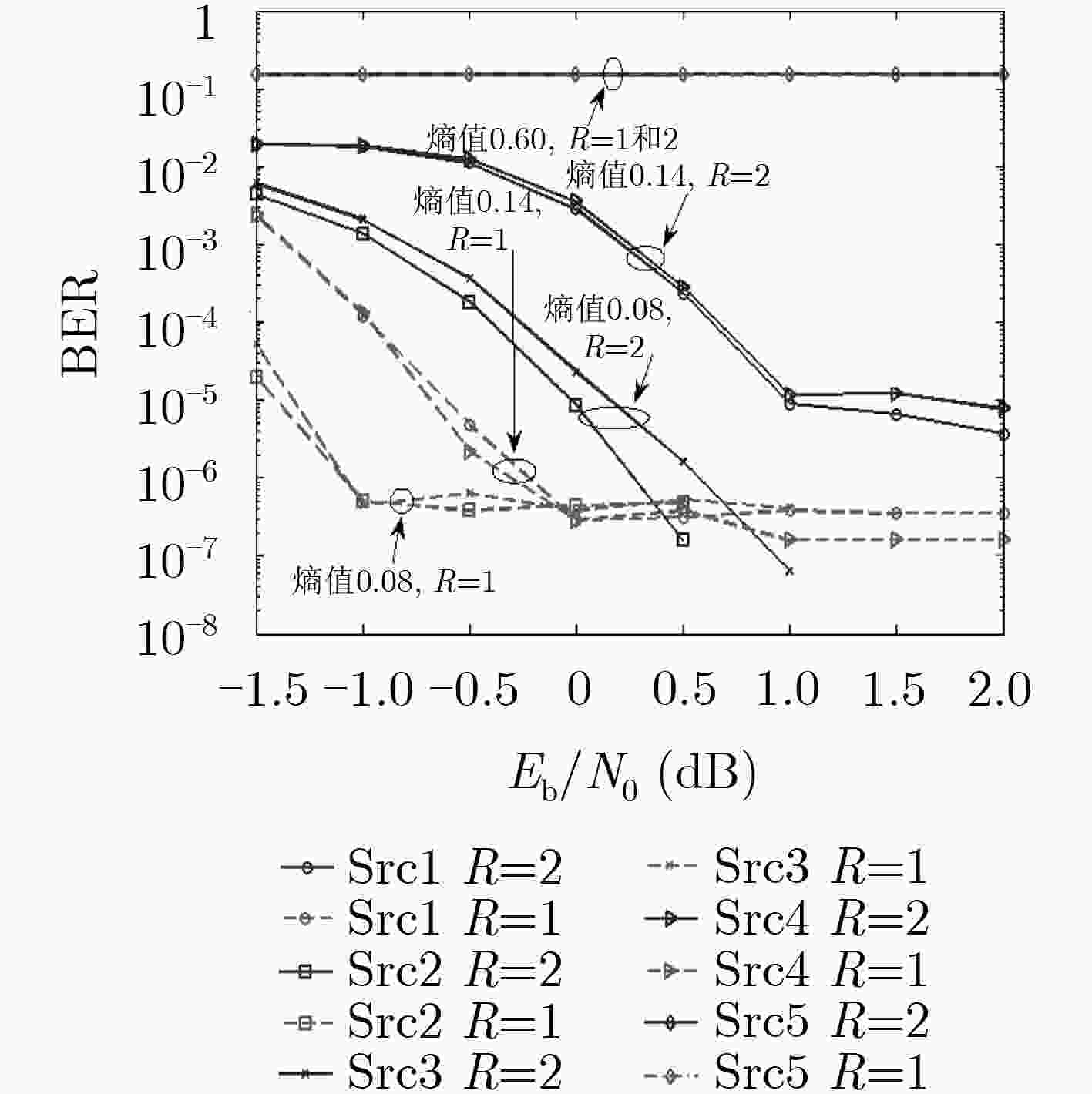


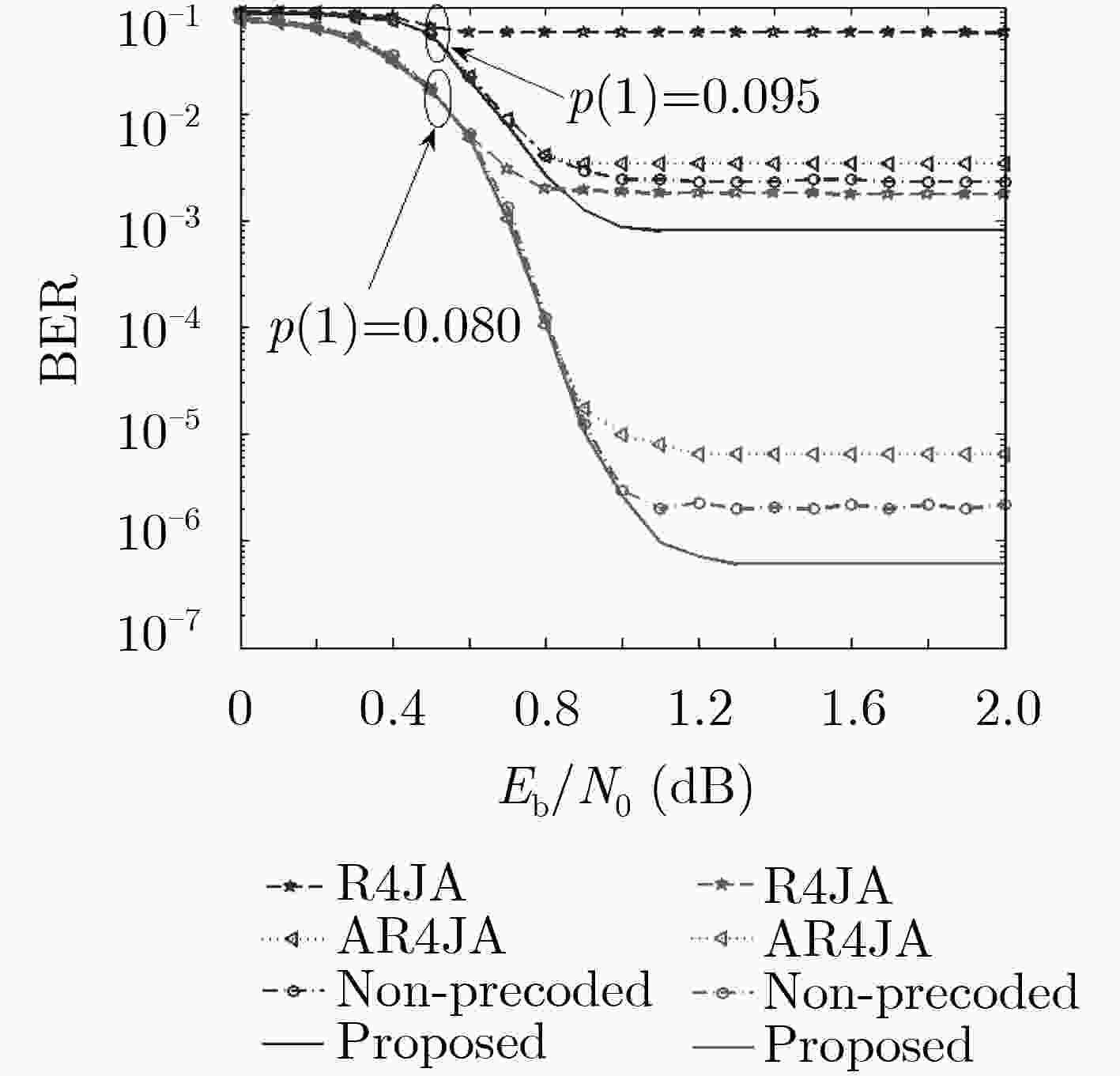
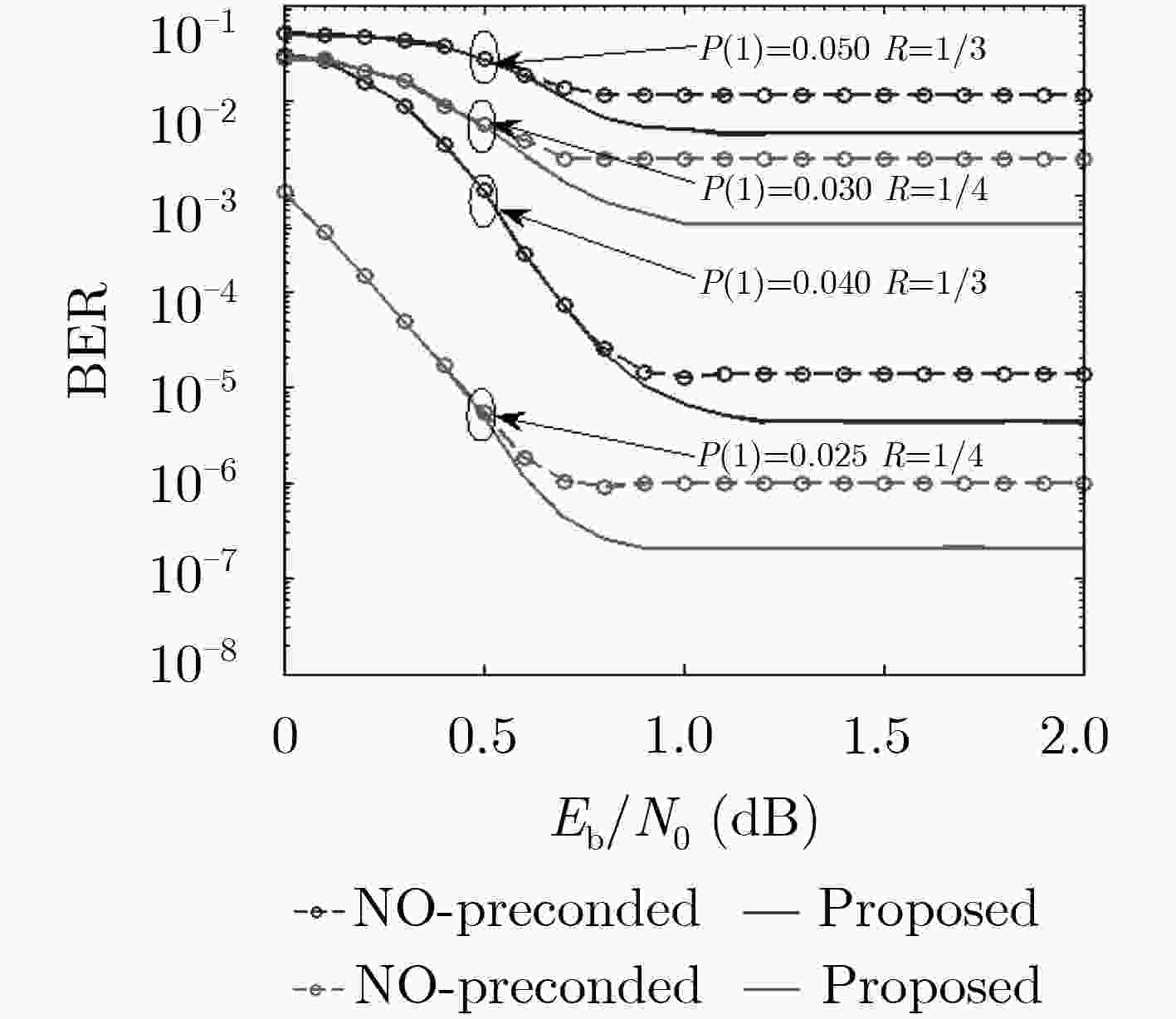
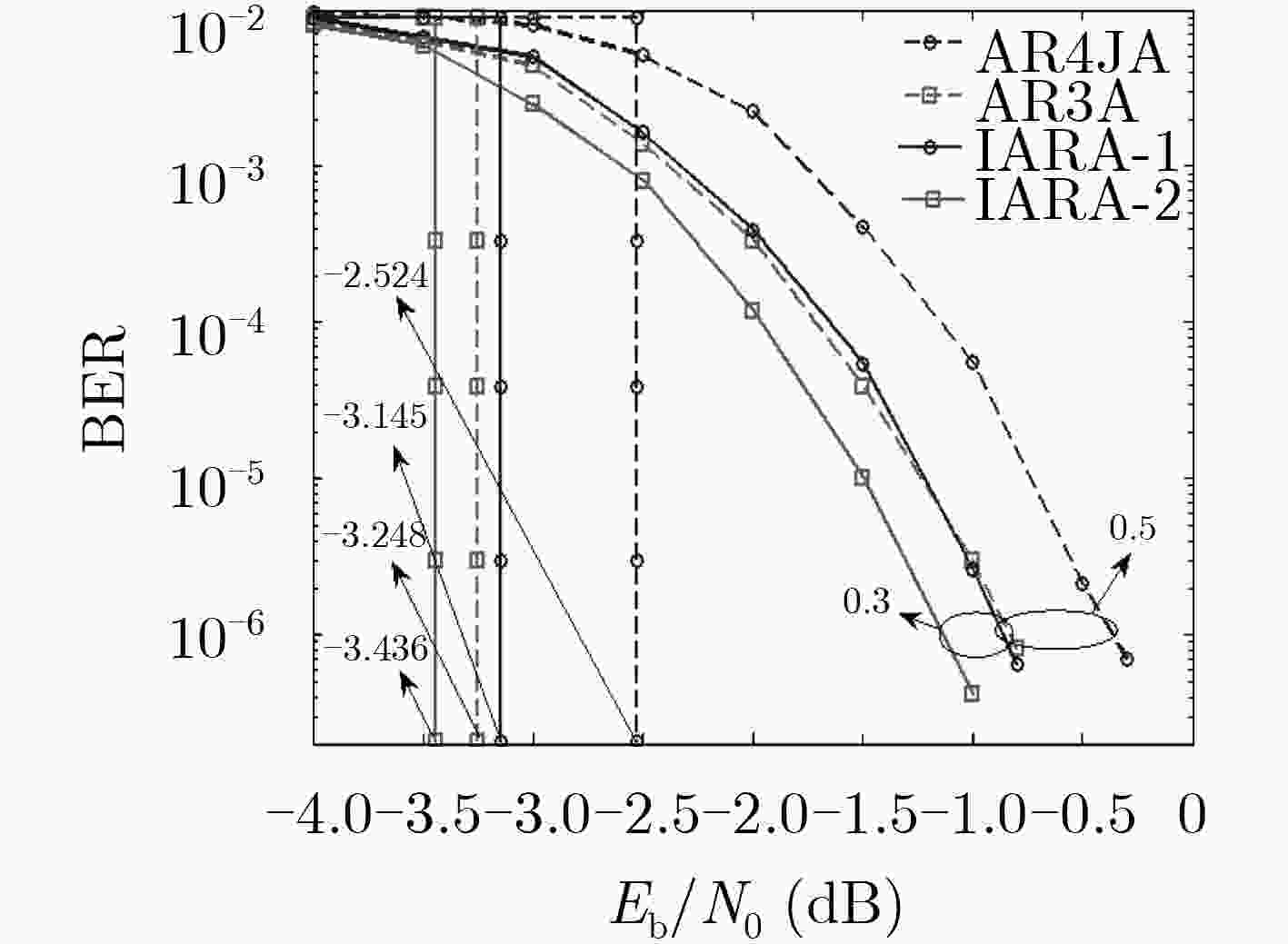





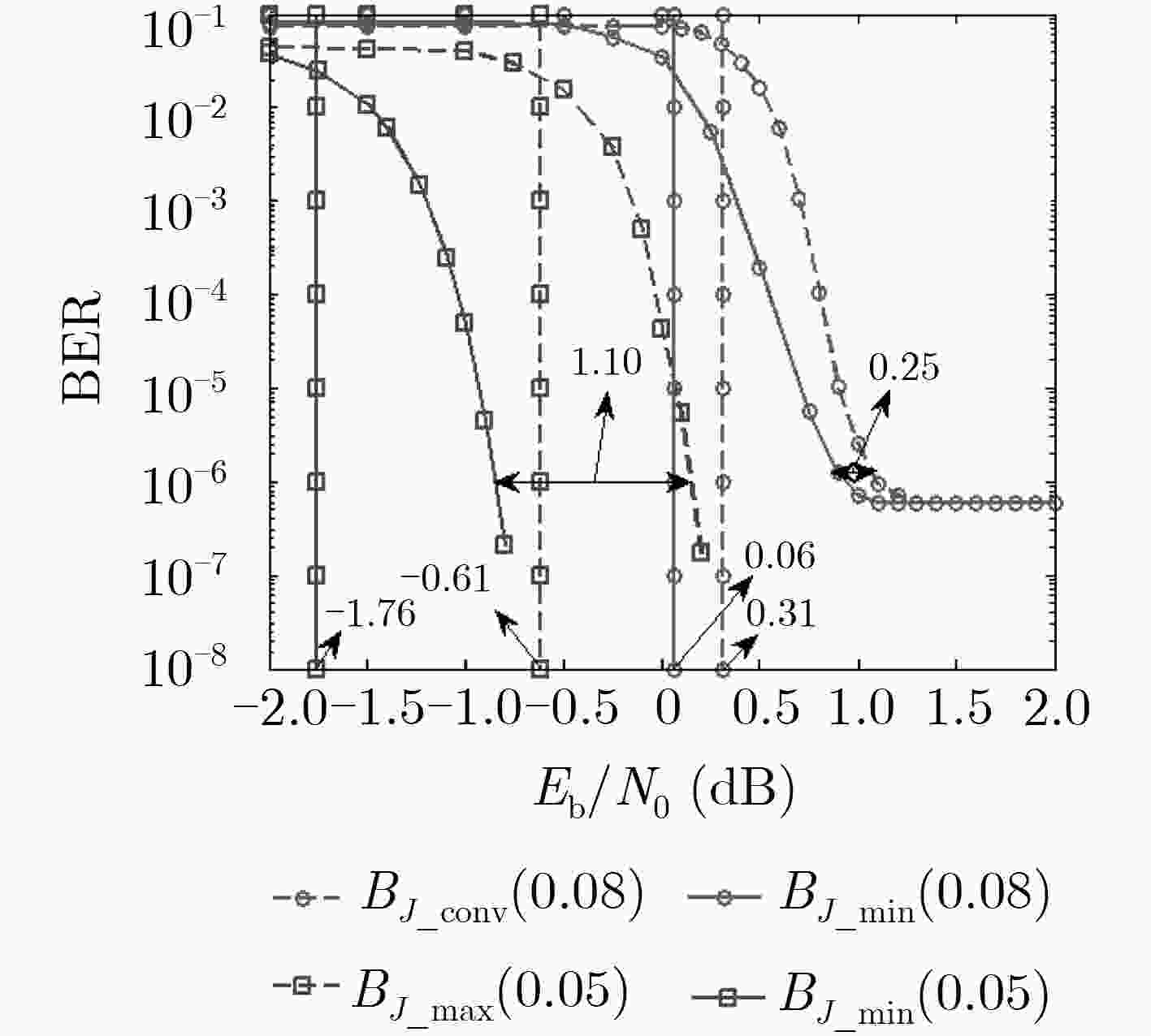


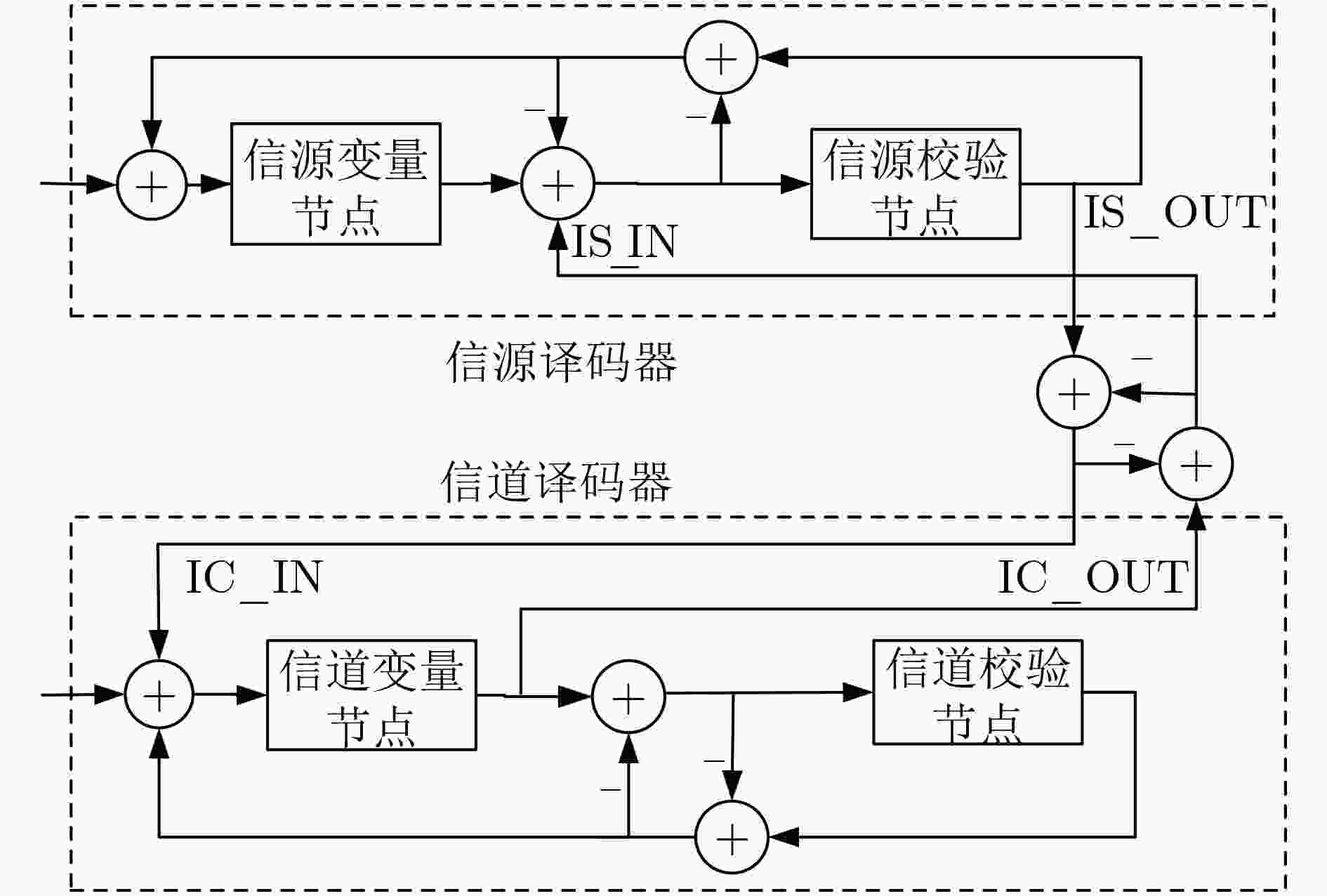

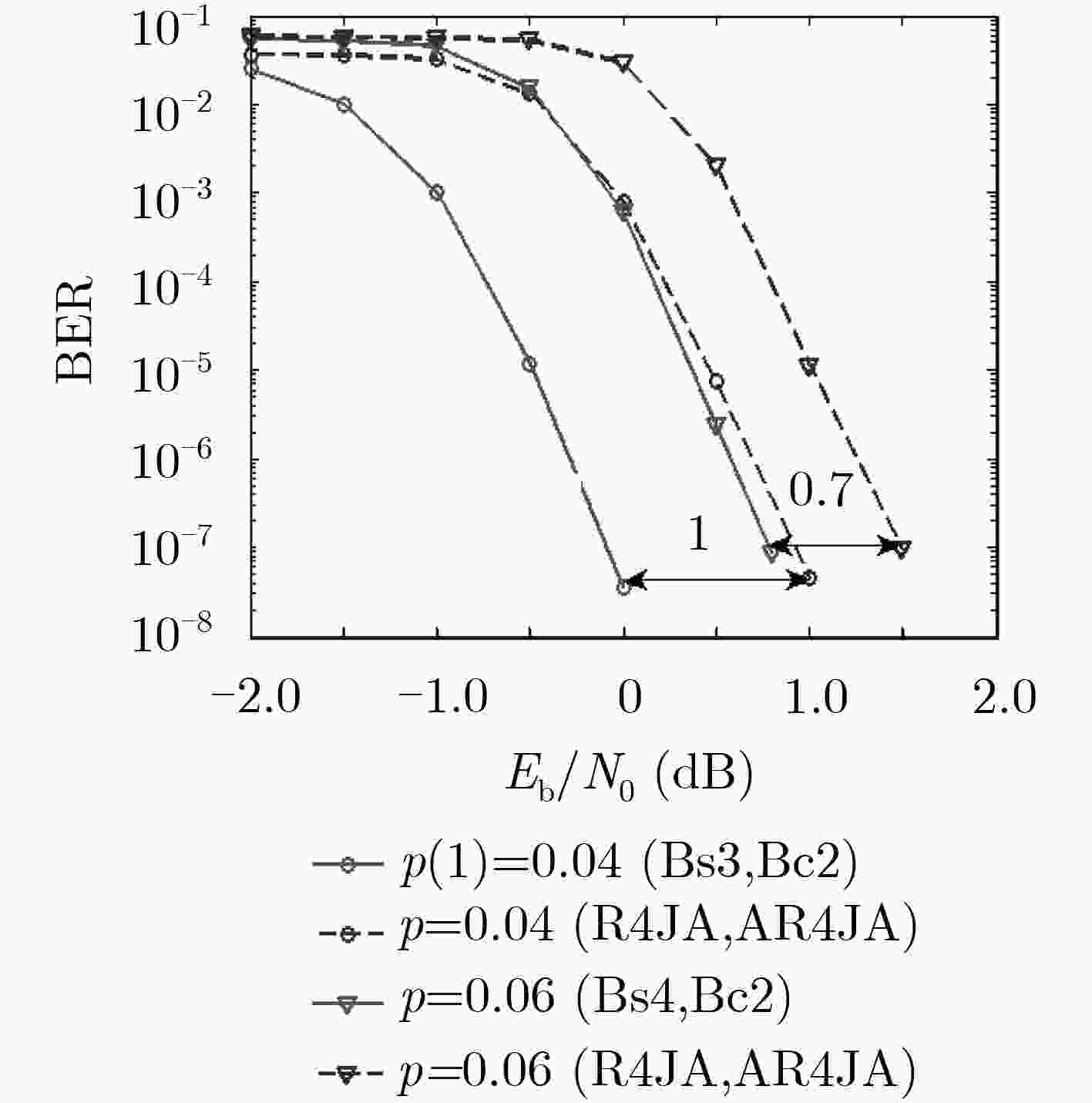



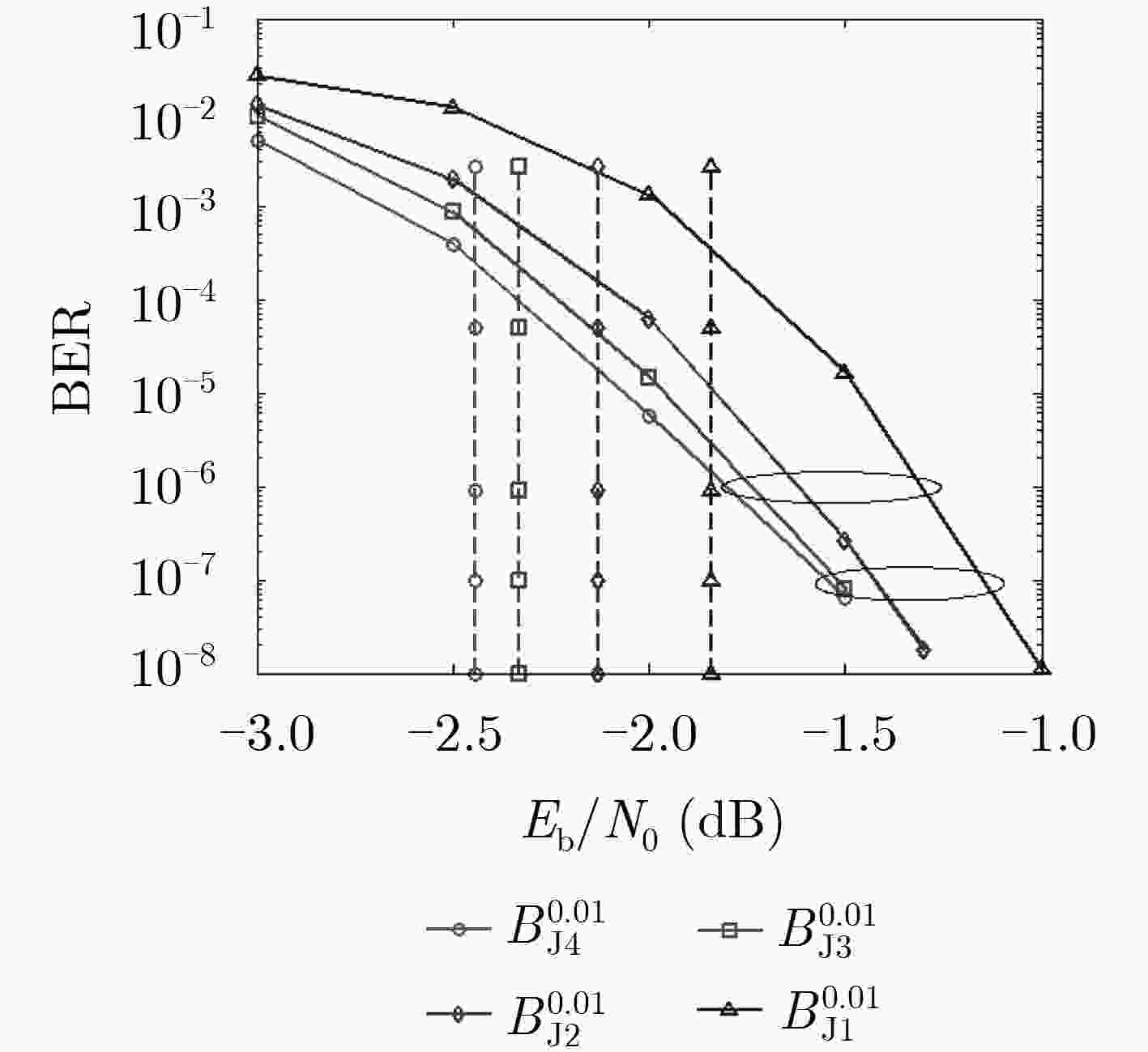





 下载:
下载:
